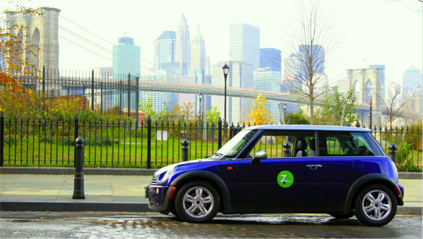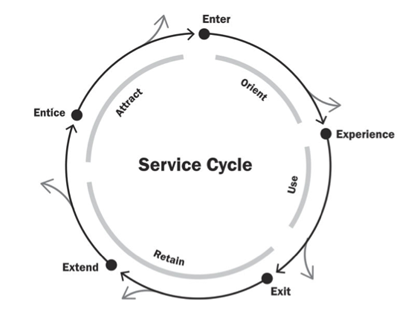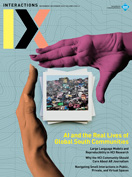Authors: Lauren Chapman Ruiz
Posted: Mon, July 21, 2014 - 1:04:06

We all hear the words service design bandied about, but what exactly does it mean? Clients and designers often struggle to find a common language to define the art of coordinating services, and frequent questions arise. Often it emerges as necessary in the space of customer experience or complicated journey maps. In response, here is a brief FAQ primer to show the lay of the land in service design.
What are services?
Services are intangible economic goods—they lead to outcomes as opposed to physical things customers own. Outcomes are generated by value exchanges that occur through mediums called touchpoints. For example, when you use Zipcar, you don’t actually own the Zipcar, you buy temporary ownership. You use the car, then transfer it to someone else once it is returned. Every point in which you engage with Zipcar is a touchpoint.
What creates a service experience?
Services are always co-created by what we call service users and service employees—the direct beneficiaries of the service, and the individuals who see the service through.
This oftentimes means that the outcome will vary for each service user. Your experience of a service may be completely different than another’s. Think of a flight—it can be a pleasant experience, or if you have a screaming baby next to you, not so great. Service employees can do everything to provide a good experience, but there are unknown factors each time that can ruin that experience.
A positive service experience considers and works to account for these situations—they are intentionally planned.
Who else is involved in a service?
A service experience often involves more than just the service user and employee. There are several types of people working together to create a service:
- Service customers are actually purchasing the service, which is sometimes a different user than who is actually using the service.
- Service users directly use the service to achieve the outcome.
- Frontstage service employees deliver the service directly to the user.
- Backstage service employees make everything happen in the background; the user doesn’t see or interact directly with these people.
- Partner service employees are other partners involved in delivering the service. For example, UPS is a partner service employee to Amazon. You may order from Amazon, but UPS plays a role in completing your service experience.
What is frontstage and backstage?
In services, there are things the customer does and doesn’t see—we call this frontstage and backstage. Think of it like theater: backstage is what is done behind the curtain to support the actors, who are frontstage, and they’re who you see in front of the curtain. Those on the backstage do just as much to shape the experience as those on the front stage. They help to deliver the service, play an active and critical part in shaping the experience, and represent a company’s brand.
Partners help the company deliver the service outcome by doing things like delivering packages, providing supplies for the service, or processing data.
What are touchpoints?
Earlier I mentioned touchpoints as the medium through which value exchanges happen, leading to the outcomes of a service. Touchpoints are these exchange moments in which service users engage with the service.
There are five different types of touchpoints:
- People, including employees and other customers encountered while the service is produced
- Place, such as the physical space or the virtual environment through which the service is delivered
- Props, such as the objects and collateral used to produce the service encounter
- Partners, including other businesses or entities that help to produce or enhance the service
- Processes, such as the workflows and rituals that are used to produce the service (this relates the people, place, props, and partners).
Unlike most products, a service can be purchased multiple times. If a service is purchased just once, it may be a high-value exchange. Since most services are used frequently, we approach designing a service by considering the service cycle.

The service cycle helps answer the following questions:
- How do we entice service users?
- How do they enter into the service?
- What is their service experience?
- How do they exit from the service?
- And how do we extend the service experience to retain them as a repeat service user?
What has 30 years done to services?
A lot of changes have occurred to services over the decades. Think about banking services. At one point, the only access to banks included four channels: checks, phone, mail, and branches. Today, there are many more access channels that need to be coordinated, including debit cards, ATMs, online banking, mobile web access, texting, iPhone, Android, mobile check deposit, retail partners, and even Twitter.

And here’s the exciting news—service design (or as some industries might call it, customer experience) is critical to making a cohesive experience across all these channels! There is a desperate need to coordinate these elements using the skills and principles of design.

Like most industries, design disciplines have been changing as a response to paradigm shifts in the economy. Graphic design emerged from the printing press. The industrial age gave birth to industrial design. Personal computing and the mobile age gave rise to interaction design. And the convergence of all of these channels has bought service design forward to coordinate service outcomes.
So how important is service design?
We’ve all had bad service experiences across a range of industries. They’re why companies lose customers, and they can bring frustration, pain, and suffering—from poor transit systems to care delivery. When clients neglect backstage or frontstage employees, every pain point will show through to a service user and customer.
Without effective service design, many companies break apart into disconnected channels, with no one overseeing or coordinating. And even if you’re creating a product, understanding the service you’re trying to put your product into will help your product be much more successful—remember, your B2B “product” is also one of your customer’s touchpoints.
In addition, there are many opportunities to leverage technology to create new services. Look at TaskRabbit—it starts as a digital experience, but without the “rabbits” to perform the service, it’s useless.
Finally, well-designed service experiences differentiate companies. Those who pay attention to wisely designing services will be poised to stand out and achieve success in our ever-changing economy.
So how important is service design? I hope this post has convinced you the answer is very. Tune in again as we’ll be continuing this topic with a deep dive into one of the most important tools of service design—the service blueprint.
Top image via Zip Car, all others created by Izac Ross
Posted in: on Mon, July 21, 2014 - 1:04:06
Lauren Chapman Ruiz
View All Lauren Chapman Ruiz's Posts






Post Comment
@rypac (2014 07 22)
I seriously appreciate your information.
this post is helpful.
thanks for this idea